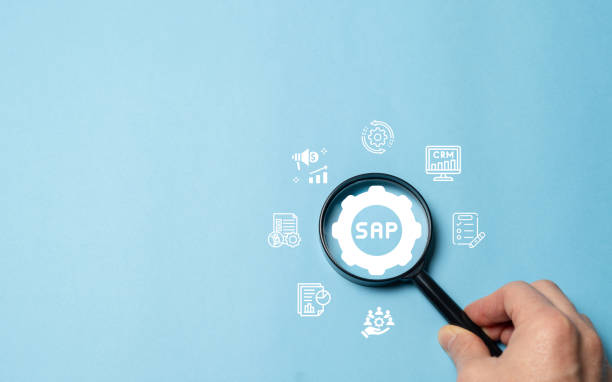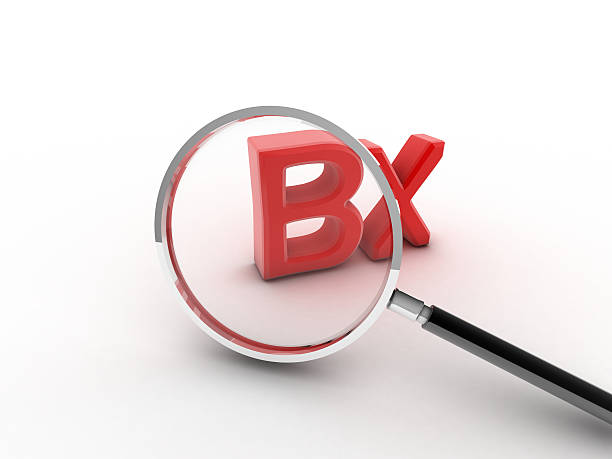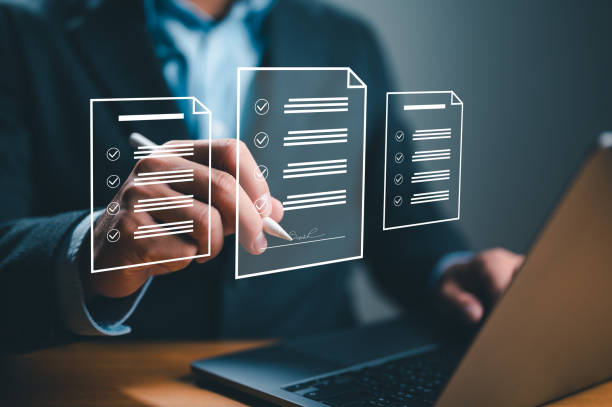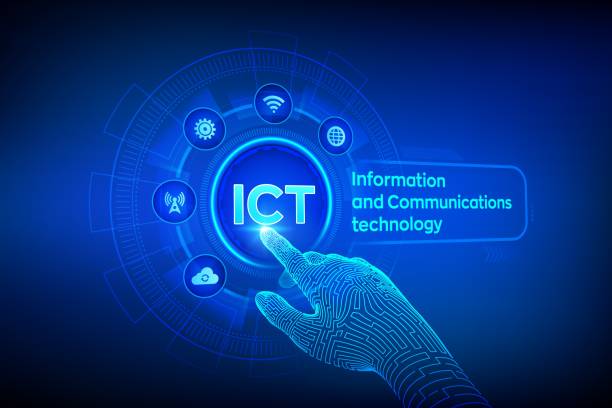Introduction to On-Page SEO and Its Critical Importance

In today’s highly competitive digital world, visibility in search engines like Google is of vital importance.
This is where the concept of #On_Page_SEO or #In_Page_Optimization comes into play.
On-page SEO refers to a set of actions taken within your website to optimize your web pages for search engines and users.
This includes improving content, site structure, and HTML codes.
The main goal of implementing On-page SEO is to help search engines crawl and index your pages better, ultimately leading to higher rankings in search results.
A website with strong on-page SEO can attract more organic traffic, which means visitors who are actively looking for information or products that you offer.
This not only helps increase visits but also leads to a higher conversion rate.
An important part of the educational nature of this approach is to help you become familiar with its principles and tricks so you can optimize your site as best as possible.
Without attention to on-page SEO, even the best content may never reach its target audience and get lost in the sea of web information.
Therefore, mastering the principles of on-page SEO is not an option, but a necessity for every online business and webmaster seeking increased visibility and targeted traffic.
This process is considered the foundation of any successful digital marketing strategy.
Does your company’s website create a professional and lasting first impression in the minds of potential customers? Rasaweb, with its professional corporate website design, not only represents your brand’s credibility but also opens a path for your business growth.
✅ Create a powerful and reliable brand image
✅ Attract target customers and increase sales
⚡ Get free consultation
Keyword Research; The Foundation of Successful On-Page SEO

The beating heart of any SEO strategy, especially on-page SEO, is comprehensive and accurate keyword research.
This process involves finding the phrases users use when searching for your information, products, or services in search engines.
Keywords must be carefully selected to be both relevant to your content and have the potential to attract high traffic.
One of the specialized aspects of keyword research is understanding User Intent.
Is the user looking for information (informational keywords), intending to buy (commercial keywords), or seeking a specific website (navigational keywords)? Answering these questions helps you produce more targeted content.
In addition to main keywords, using Long-tail Keywords, which are usually longer and more specific, can attract higher quality traffic because they have less competition and the user’s intent is clearer.
Various keyword research tools like Google Keyword Planner, SEMrush, and Ahrefs can guide you at this stage and provide valuable data on search volume, competition, and related suggestions.
This stage not only helps identify the best words to target but also provides valuable insights into your audience’s needs and questions.
This analysis is the cornerstone of the content you will optimize for on-page SEO.
Content Optimization; The Beating Heart of On-Page SEO

After identifying suitable keywords, the next and perhaps most important component of on-page SEO, is content optimization.
Your content should be valuable, comprehensive, and readable not only for search engines but primarily for users.
This section is a comprehensive guide to creating effective content.
Natural and organic use of keywords throughout the text, without excessive repetition (known as Keyword Stuffing), is very important.
Content structure is also vital; using headings and subheadings (H1 to H6) helps organize the text, increases its readability, and allows search engines to understand the logical structure of the content.
Additionally, short paragraphs, clear sentences, and the use of lists and bullet points improve the user experience.
The explanatory nature of the content, especially for complex topics, can help users better understand the material and spend more time on your page.
Images, videos, and diagrams can help make content more appealing and richer.
Furthermore, content optimization includes ensuring the freshness and up-to-dateness of information; old content should be periodically reviewed and updated to remain relevant and valuable.
Producing entertaining yet informative content can increase engagement rates.
All these aspects help improve your ranking in search results and demonstrate your commitment to providing value to users.
Important HTML Tags in On-Page SEO

On-page SEO is not limited to text content; your website’s HTML structure and codes also play a very crucial role in how search engines understand your pages.
This specialized section focuses on critical HTML tags that must be carefully optimized.
| HTML Tag | Importance for On-Page SEO | Optimization Tips |
|---|---|---|
| <title> (Page Title) | The first thing a user sees in search results and a key ranking factor. Directly affects click-through rate (CTR). |
Include the main keyword at the beginning, make it engaging and concise (50-60 characters for full display). Be unique for each page. |
| <meta description> (Meta Description) | Page content preview in search results. Although not a ranking factor, it strongly influences CTR. |
Engaging, includes keywords, contains a call to action (150-160 characters). Must accurately describe page content. |
| <h1>-<h6> (Headings and Subheadings) | Content structuring, readability improvement, and helping search engines understand the hierarchy and main topics of the page. | H1 should include the main keyword and be used only once. H2-H6 for logical segmentation and use of related keywords. |
| <img alt> (Image Alt Text) | Explains image content for search engines and visually impaired users (accessibility). Helps with image search ranking. |
Be descriptive and accurate, relevant to the image, include keywords (if relevant) without stuffing. |
| <a> (Links) | Establishes connection between pages, passes link equity, and improves user experience through easy navigation. | Use relevant and natural anchor text. Fix broken links. |
Correct optimization of these tags is one of the most fundamental parts of any on-page SEO campaign and directly affects your ranking and click-through rate (CTR).
The explanatory nature of each of these elements deepens your understanding of their function and allows you to have more control over how your website is displayed and understood by search engines.
This ensures that the most important signals related to your content are correctly sent to Google.
Does your current website display your brand’s credibility as it should? Or does it scare away potential customers?
Rasaweb, with years of experience in designing professional corporate websites, is your comprehensive solution.
✅ A modern, beautiful website tailored to your brand identity
✅ Significant increase in lead and new customer acquisition
⚡ Contact Rasaweb now for a free corporate website design consultation!
URL Structure and Internal Linking for SEO

Another important component in on-page SEO is optimizing URL structure and internal linking strategy.
Clean and readable URLs are more understandable not only for users but also for search engines.
A good URL should be short, descriptive, and include the page’s main keyword.
Avoiding extra characters, meaningless numbers, and dynamic parameters in URLs helps increase crawlability and indexability.
For example, instead of `yourwebsite.com/post?id=123&cat=456`, use `yourwebsite.com/articles/comprehensive-on-page-seo`.
A logical and hierarchical folder structure in the URL also helps Google understand your site’s structure.
But beyond the URL, internal linking is a powerful analytical and strategic tool.
Internal links establish connections between different pages of your website, which helps search engines discover and evaluate all your pages.
Also, internal linking helps transfer Link Equity from stronger pages to weaker ones and can improve your site’s overall ranking.
Using relevant and descriptive Anchor Text for internal links communicates the importance of the destination content to search engines.
This guide helps you create a strong internal link network within your site that both facilitates user navigation and sends valuable signals to search engines.
Improving User Experience (UX) and Site Speed; Indirect On-Page SEO Factors

While many aspects of on-page SEO directly relate to content and code, there are also indirect factors that strongly influence your ranking.
User experience (UX) and site loading speed are among the most important of these factors.
Google increasingly focuses on user satisfaction, and websites that provide a poor user experience will eventually face lower rankings.
Key UX elements include easy navigation, responsive design for mobile (considering Google’s Mobile-First Indexing approach), and engaging, understandable content.
Site speed is also a direct ranking factor.
Both users and search engines dislike slow sites.
Metrics like Core Web Vitals (including LCP: Largest Contentful Paint, FID: First Input Delay, CLS: Cumulative Layout Shift), introduced by Google, directly measure website performance from the user’s perspective.
Optimizing images (compression, lazy loading), compressing and minifying codes (HTML, CSS, JavaScript), using a CDN (Content Delivery Network) for faster content delivery, and choosing suitable and high-speed hosting are among the actions that can help improve your site’s speed.
Paying attention to these factors strengthens your on-page SEO optimization and ensures users have a positive experience, ultimately leading to better rankings.
An analysis of user behavior on your site (using tools like Google Analytics) can identify weaknesses in UX.
The Role of Multimedia Content and Image Optimization in On-Page SEO

In an era where visual content is paramount, the use of multimedia content such as images, videos, and infographics plays a significant role in enriching your content and improving on-page SEO.
This not only enhances the user experience but also provides new opportunities for ranking in image and video search results.
Image optimization is a specialized and important part of this process.
| Content Type | Importance for On-Page SEO | Optimization Tips |
|---|---|---|
| Images | Increases content appeal, ranks in image search, improves UX and reduces bounce rate. | Compress size (without quality loss), use optimized formats (WebP, JPEG 2000), descriptive Alt Text, relevant and descriptive file name, use responsive images (srcset). |
| Videos | Increases user dwell time, ranks in video search, provides entertaining and educational content. | Use Schema.org tags for video, captioning (subtitles) for accessibility and SEO, embedding from popular platforms (YouTube/Aparat). |
| Infographics | Visualizes complex information in an digestible way, increases social sharing, potential for backlink acquisition (due to visual value). | Appropriate resolution, descriptive alt text, compression for loading speed, placing explanatory text alongside it. |
Furthermore, using appropriate formats for images (like WebP) and compressing them without losing quality significantly helps improve site loading speed.
Image Alt Text is not only important for Accessibility but also helps search engines understand the image content.
Therefore, Alt Text should be descriptive and include relevant keywords.
This comprehensive guide helps you leverage the full potential of multimedia content to enhance your on-page SEO and provide a richer visual experience for your users.
Advanced Technical On-Page SEO for Experts

In addition to content and structural aspects, on-page SEO has advanced technical dimensions that are of particular importance to SEO experts and webmasters.
This section examines technical elements that help search engines better crawl, index, and understand your website.
One of the most important of these elements is Schema Markup or structured data.
Schema is code added to your website that helps search engines understand your content and display it in a richer way in search results (Rich Snippets), such as rating stars for products, recipes, or business contact information.
The Robots.txt file and XML sitemap are also vital tools.
Robots.txt tells search engines which parts of your site not to crawl (e.g., login pages or user panels), while an XML sitemap provides a list of all important pages on your site to search engines to ensure no page is missed and all main pages are accessible.
Canonical tags are also used to prevent Duplicate Content issues, a problem that can harm your SEO ranking.
The Canonical tag tells search engines which version of a page is the original and should be indexed.
These analytical and technical aspects ensure optimal crawling and indexing, which is essential for any comprehensive on-page SEO strategy and can make a big difference in your site’s overall SEO performance.
Losing potential customers due to an unprofessional website? Rasaweb is your answer! With our specialized corporate website design services:
✅ Enhance your business’s credibility and standing
✅ Experience attracting more targeted customers
⚡ Act now for a free consultation!
Common Challenges and Mistakes in On-Page SEO and Their Solutions

Implementing on-page SEO can be complex, and webmasters often encounter common challenges and mistakes that can negatively impact their site’s ranking.
This section highlights common pitfalls to help you avoid these common mistakes.
One of the biggest mistakes is Keyword Stuffing; that is, excessive repetition of a keyword in content in hopes of higher ranking.
This practice is not only penalized by Google but also severely reduces the user experience.
The solution is natural and organic use of keywords and focusing on content quality and value.
Another common mistake is Duplicate Content, which can result from different versions of a page (e.g., with different URL parameters) or content copied from other sites.
This problem can confuse search engines and reduce your site’s credibility.
Using Canonical tags, 301 redirects for deleted pages, and disallowing indexing of unnecessary or duplicate pages can help resolve this issue.
Lack of mobile optimization is also a critical error.
Given that most searches are conducted via mobile devices, a site not optimized for mobile not only provides a poor user experience but is also penalized by Google.
Finally, ignoring site speed, broken links, and Thin Content are also mistakes that should be addressed.
Thin content refers to content that offers little value to the user.
This tutorial helps you identify and overcome these obstacles and maintain a stronger, more sustainable on-page SEO strategy.
The Future of On-Page SEO and New Trends

The world of on-page SEO is constantly evolving, and what is effective today might not be sufficient tomorrow.
Awareness of new trends and staying informed about Google’s algorithm changes is vital for maintaining a competitive edge.
One of the most important trends is the role of Artificial Intelligence (AI) in search engines.
Algorithms like Google’s RankBrain, BERT, and MUM have significantly improved their understanding of user intent and complex content.
This means that producing comprehensive, natural, and user-centric content has become more important than ever, as AI can better identify high-quality and relevant content.
Another trend is the increasing emphasis on E-A-T (Expertise, Authoritativeness, Trustworthiness).
Google seeks sources that provide authoritative and reliable information, especially for YMYL (Your Money Your Life) topics that affect health, financial security, or general well-being.
This requires that your website not only has quality content but also that the author’s and the website’s credibility are well demonstrated.
Voice and image search are also growing, and optimizing for them (as part of on-page SEO) will become increasingly important, with a focus on conversational keywords and natural language.
Entertaining yet informative content that fully covers user needs will be more successful in the future.
Ultimately, focusing on the overall user experience and not just keywords indicates the future direction of on-page SEO.
This analysis of future trends prepares you for upcoming challenges and ensures that your SEO strategies remain up-to-date and effective.
Frequently Asked Questions
| Question | Answer |
|---|---|
| What is On-Page SEO? | On-page SEO involves optimizing elements directly within your control and on your website. Its goal is to help search engines better understand page content and improve its ranking. |
| Why is On-Page SEO important? | On-page SEO provides clear signals to search engines about page content, improves user experience, and increases the chance of attracting organic traffic. |
| What are the most important On-Page SEO factors? | Keywords, Title Tag, Meta Description, URL structure, quality content, image optimization, and internal links are among the most important factors. |
| What is the role of the Title Tag in On-Page SEO? | The title tag is one of the most important signals for search engines and users, defining the main topic of the page. It should include the main keyword and be engaging. |
| How important is the Meta Description? | The meta description does not directly affect ranking, but by encouraging users to click, it can improve the click-through rate (CTR). |
| How to optimize images for On-Page SEO? | By using descriptive file names, appropriate Alt Text containing keywords, compression to reduce size, and correct dimensions. |
| How do Internal Links affect SEO? | Internal links help search engines discover and index site pages, distribute credibility (PageRank) throughout the site, and improve user navigation. |
| Is page loading speed an On-Page SEO factor? | Yes, page loading speed is a critical factor in on-page SEO and user experience. Slower pages can lead to higher bounce rates and lower rankings. |
| What are the characteristics of quality content for On-Page SEO? | Quality content should be comprehensive, unique, relevant, trustworthy, readable, and fully answer users’ needs and questions. |
| How can keywords be used in content? | Keywords should be used naturally in the title, subheadings, first paragraph, body text, and image alt text. Avoid Keyword Stuffing. |
And other services of Rasaweb Advertising Agency in the field of advertising
Smart Website Development: An effective tool for user engagement through user experience customization.
Smart Marketplace: An effective tool for analyzing customer behavior with the help of attractive UI design.
Smart Marketplace: A fast and efficient solution for campaign management focusing on marketing automation.
Smart Data Analysis: An effective tool for customer acquisition with the help of marketing automation.
Smart Social Media: A fast and efficient solution for user engagement focusing on precise audience targeting.
And more than hundreds of other services in the field of internet advertising, advertising consultation, and organizational solutions
Internet Advertising | Advertising Strategy | Advertorial
Resources
Webram: What is On-Page SEO?
Ghafurizadeh: Complete Guide to On-Page SEO
MihanWP: On-Page SEO Training
SeoKar: On-Page SEO Tutorial and Its Factors
? Are you ready to transform your business in the online space? Rasaweb Afarin, specializing in comprehensive digital marketing solutions, including WordPress website design, helps you reach your peak and establish a powerful web presence.
📍 Tehran, Mirdamad Street, next to Bank Markazi, Southern Kazeroon Alley, Ramin Alley, No. 6



